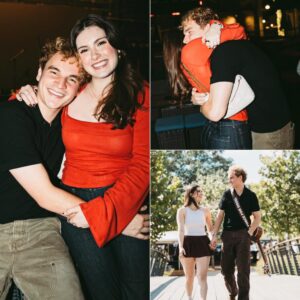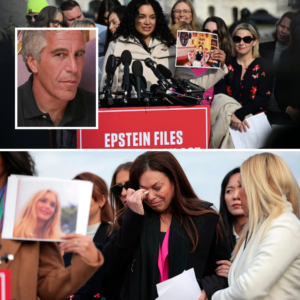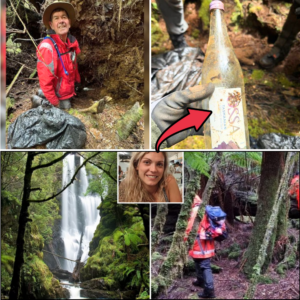In a profound loss for the world of space exploration and American heroism, James A. Lovell Jr., the legendary NASA astronaut who commanded the ill-fated Apollo 13 mission and helped turn a near-catastrophe into one of humanity’s greatest tales of survival, has passed away at the age of 97. Lovell died peacefully on August 7, 2025, at his home in Lake Forest, Illinois, surrounded by family, after a brief illness. NASA Administrator Bill Nelson paid tribute in a statement, saying, “We will miss his unshakeable optimism, his boundless curiosity, and the quiet strength that inspired generations. Jim Lovell was not just an astronaut; he was a beacon of what humanity can achieve when faced with the impossible.” Lovell’s life was a testament to perseverance, ingenuity, and the pioneering spirit that defined the Space Age, leaving an indelible mark on history through his four spaceflights, including the dramatic Apollo 13 odyssey that captured the world’s imagination.
Born on March 25, 1928, in Cleveland, Ohio, James Arthur Lovell Jr. grew up during the Great Depression, a time that instilled in him a resilient work ethic and a fascination with the skies. His father, a coal salesman, and his mother, a homemaker, encouraged his early interests in rocketry and aviation, inspired by figures like Charles Lindbergh and the Wright brothers. As a boy, Lovell built model airplanes and dreamed of flight, a passion that would propel him from modest beginnings to the stars. He attended Juneau High School in Milwaukee, Wisconsin, after his family relocated following his father’s death in a car accident when Jim was just five. There, he excelled in academics and sports, particularly football, but his true calling was aviation.
Lovell’s path to the cosmos began with his enrollment at the University of Wisconsin-Madison in 1946, where he studied engineering under the Naval Reserve Officers Training Corps (NROTC) program. However, his ambition led him to transfer to the United States Naval Academy in Annapolis, Maryland, graduating in 1952 with a Bachelor of Science degree. Commissioned as an ensign in the U.S. Navy, Lovell underwent flight training and became a naval aviator, logging thousands of hours in high-performance jets. His early career included assignments as a test pilot at the Naval Air Test Center in Patuxent River, Maryland, where he honed his skills in experimental aircraft, facing dangers that would later prepare him for the perils of spaceflight. By the late 1950s, Lovell had established himself as one of the Navy’s elite, with over 4,000 flight hours under his belt.
The formation of NASA in 1958 opened a new chapter. Initially passed over for the Mercury Seven—the first group of astronauts—due to a temporary liver condition, Lovell persisted. In September 1962, he was selected as part of NASA’s second astronaut class, known as the “New Nine,” alongside future legends like Neil Armstrong, Frank Borman, and John Young. This group was tasked with advancing America’s space program amid the Cold War race against the Soviet Union. Lovell’s technical acumen and calm demeanor quickly set him apart, earning him assignments on the Gemini program, NASA’s bridge between Mercury and Apollo.
Lovell’s first spaceflight came in December 1965 aboard Gemini 7, a two-week endurance mission with Frank Borman. Orbiting Earth for 14 days in a cramped capsule the size of a small car, they tested human limits in microgravity, conducting medical experiments and rendezvous maneuvers. The mission was grueling—dehydration, fatigue, and the psychological strain of confinement tested their resolve—but Lovell’s optimism shone through. “We were like sardines in a can,” he later quipped, “but it was the best view in the house.” Gemini 7’s success paved the way for more complex operations, proving astronauts could survive long-duration flights essential for lunar missions.
Just a year later, in November 1966, Lovell commanded Gemini 12, the program’s final flight, with Buzz Aldrin as his pilot. This mission focused on extravehicular activity (EVA), or spacewalks, which had proven challenging in prior flights. Aldrin’s successful EVAs, guided by Lovell’s precise piloting, demonstrated improved techniques like underwater training for neutral buoyancy. Lovell performed a rendezvous with an Agena target vehicle and conducted docking maneuvers, showcasing the precision needed for Apollo. Reflecting on Gemini 12, Lovell said, “It was the culmination of everything we’d learned—proof that we could operate in space like pros.” These experiences solidified his reputation as a unflappable leader, setting the stage for his Apollo assignments.
Lovell’s third flight, Apollo 8 in December 1968, was a historic milestone. As command module pilot alongside commander Frank Borman and lunar module pilot William Anders, Lovell became one of the first humans to leave Earth’s orbit and journey to the Moon. Launched on December 21, the mission aimed to orbit the Moon, scouting landing sites for future Apollo landings while beating the Soviets to this feat. The Saturn V rocket’s thunderous liftoff marked a bold step, but the real drama unfolded 238,000 miles from home.
On Christmas Eve, Apollo 8 entered lunar orbit, becoming the first spacecraft to do so with humans aboard. The crew broadcast live images of the Moon’s cratered surface and Earth’s fragile blue marble rising over the lunar horizon—a photo dubbed “Earthrise” that profoundly impacted global consciousness, emphasizing humanity’s unity and the planet’s vulnerability. Lovell, ever the poet among engineers, described Earth as “a grand oasis in the big vastness of space.” The astronauts read from the Book of Genesis during their broadcast, a moment of spiritual reflection amid scientific triumph. Apollo 8’s success boosted NASA’s morale after the Apollo 1 fire tragedy and reaffirmed America’s lunar ambitions. For Lovell, it was a personal pinnacle: “Seeing the Moon up close was like touching the face of God.”
But it was Lovell’s fourth and final mission, Apollo 13 in April 1970, that etched his name into legend. Commanding the spacecraft with Fred Haise and Jack Swigert (who replaced Ken Mattingly at the last minute due to measles exposure), Lovell aimed to land on the Moon’s Fra Mauro highlands. Launched on April 11, the mission proceeded smoothly until 55 hours in, when an oxygen tank explosion crippled the service module. “Houston, we’ve had a problem,” Lovell radioed calmly—a line immortalized in popular culture (though slightly misquoted as “Houston, we have a problem” in the film).
The explosion vented precious oxygen, disabled power systems, and forced the cancellation of the lunar landing. With the command module Odyssey compromised, the crew retreated to the lunar module Aquarius, designed for two men for two days but now sustaining three for four. Carbon dioxide levels soared, temperatures plummeted to near-freezing, and water rations dwindled. Lovell’s leadership was pivotal: he coordinated with Mission Control to improvise solutions, like using duct tape and cardboard to adapt CO2 scrubbers from Odyssey to Aquarius. Navigating by stars when instruments failed, Lovell manually piloted mid-course corrections, ensuring a precise reentry angle—too steep, and they’d burn up; too shallow, and they’d skip off the atmosphere.
The world held its breath as Apollo 13 slung around the Moon, using its gravity for a free-return trajectory. Lovell’s optimism never wavered: “Failure is not an option,” echoed by flight director Gene Kranz, became the mission’s mantra. On April 17, after 142 hours of tension, the crew splashed down safely in the Pacific, rescued by the USS Iwo Jima. Lovell later reflected, “We turned a potential tragedy into a successful failure.” The mission’s ingenuity saved lives and advanced NASA’s problem-solving ethos, earning the crew the Presidential Medal of Freedom.
Post-Apollo, Lovell retired from NASA in 1973 after 11 years and four flights, totaling 715 hours in space. He transitioned to business, serving as CEO of Bay-Houston Towing and later Fisk Telephone Systems. In 1994, he co-authored Lost Moon: The Perilous Voyage of Apollo 13 with Jeffrey Kluger, which inspired Ron Howard’s 1995 Oscar-nominated film Apollo 13, with Tom Hanks portraying Lovell. The movie, grossing over $355 million, brought his story to new generations, emphasizing themes of teamwork and resilience. Lovell cameo’d as the Iwo Jima’s captain, a nod to his enduring legacy.
Lovell’s accolades were numerous: the Congressional Space Medal of Honor, NASA’s Distinguished Service Medal (twice), and induction into the Astronaut Hall of Fame. He advocated for space exploration, speaking at schools and events, and supported STEM education through the Lovell Center for Space Education in Chicago. Married to Marilyn Gerlach since 1952, they raised four children in a union that weathered the stresses of his career. Marilyn’s portrayal by Kathleen Quinlan in the film highlighted the unsung heroism of astronaut families.
Tributes poured in upon his passing. NASA hailed him as “a true pioneer whose courage defined an era.” President [Current President] called him “an American hero whose optimism lifted us all.” Hanks tweeted, “Jim Lovell taught us that no problem is insurmountable with grit and grace.” Haise, 91, said, “Jim was the rock that kept us steady. His optimism was our lifeline.”
Lovell’s di sản endures in an age of renewed space ambitions, from Artemis to Mars missions. He reminded us that exploration demands not just technology, but human spirit. As Nelson noted, “Jim’s unshakeable optimism will guide us to the stars.” In his 97 years, Lovell journeyed from Earth’s skies to lunar orbits and back, inspiring us to reach higher. Farewell, Captain—your mission is complete, but your light shines on.





